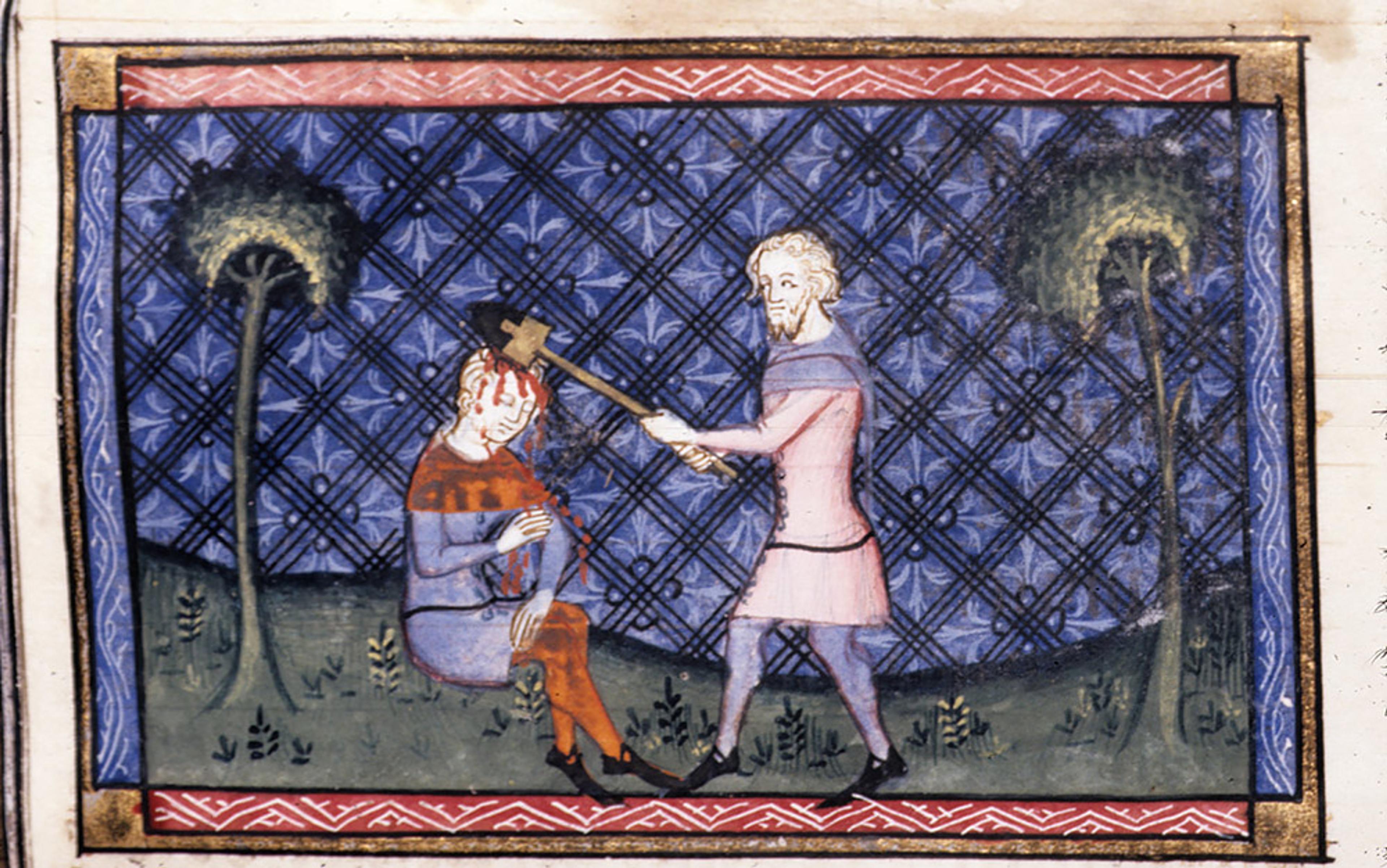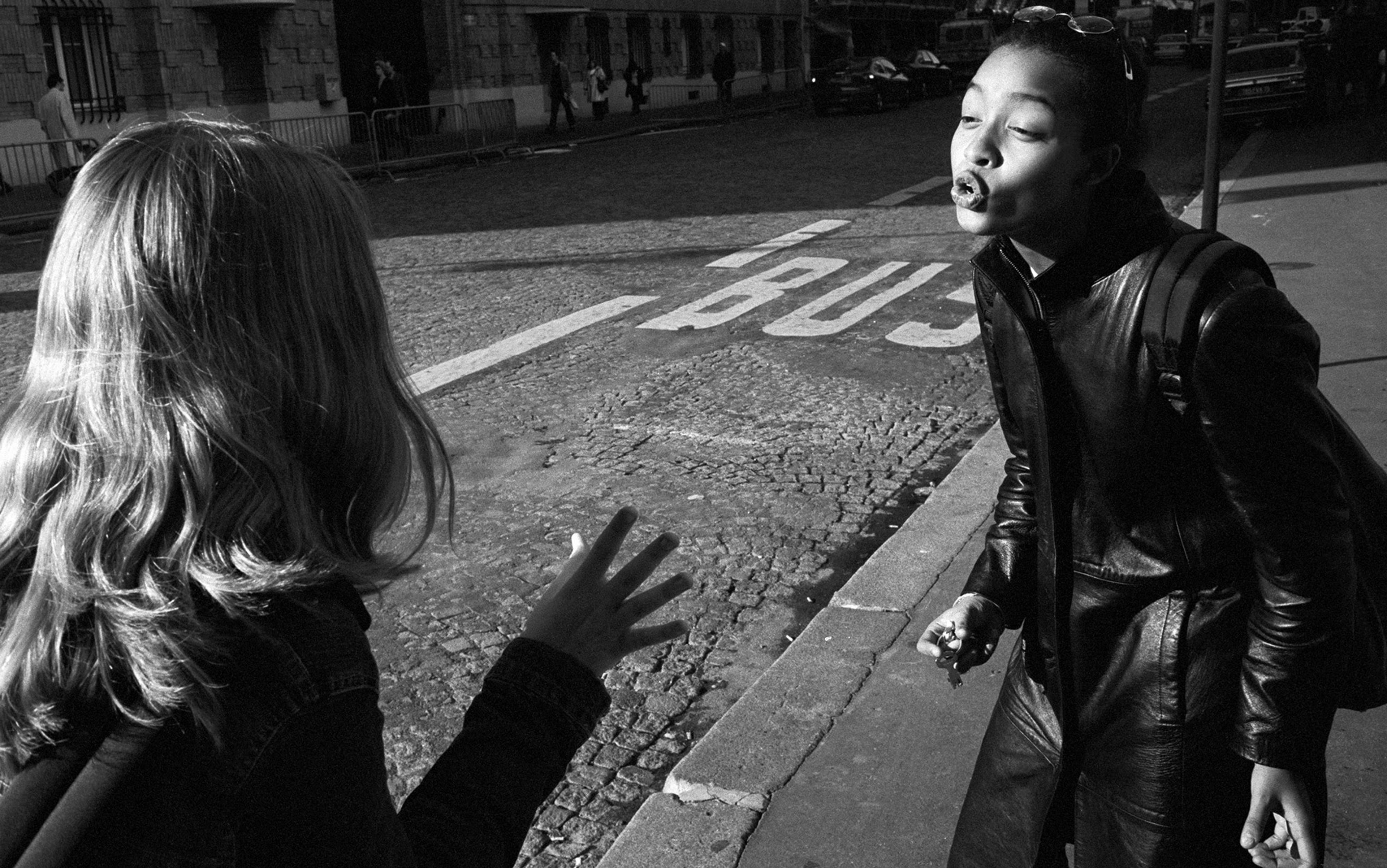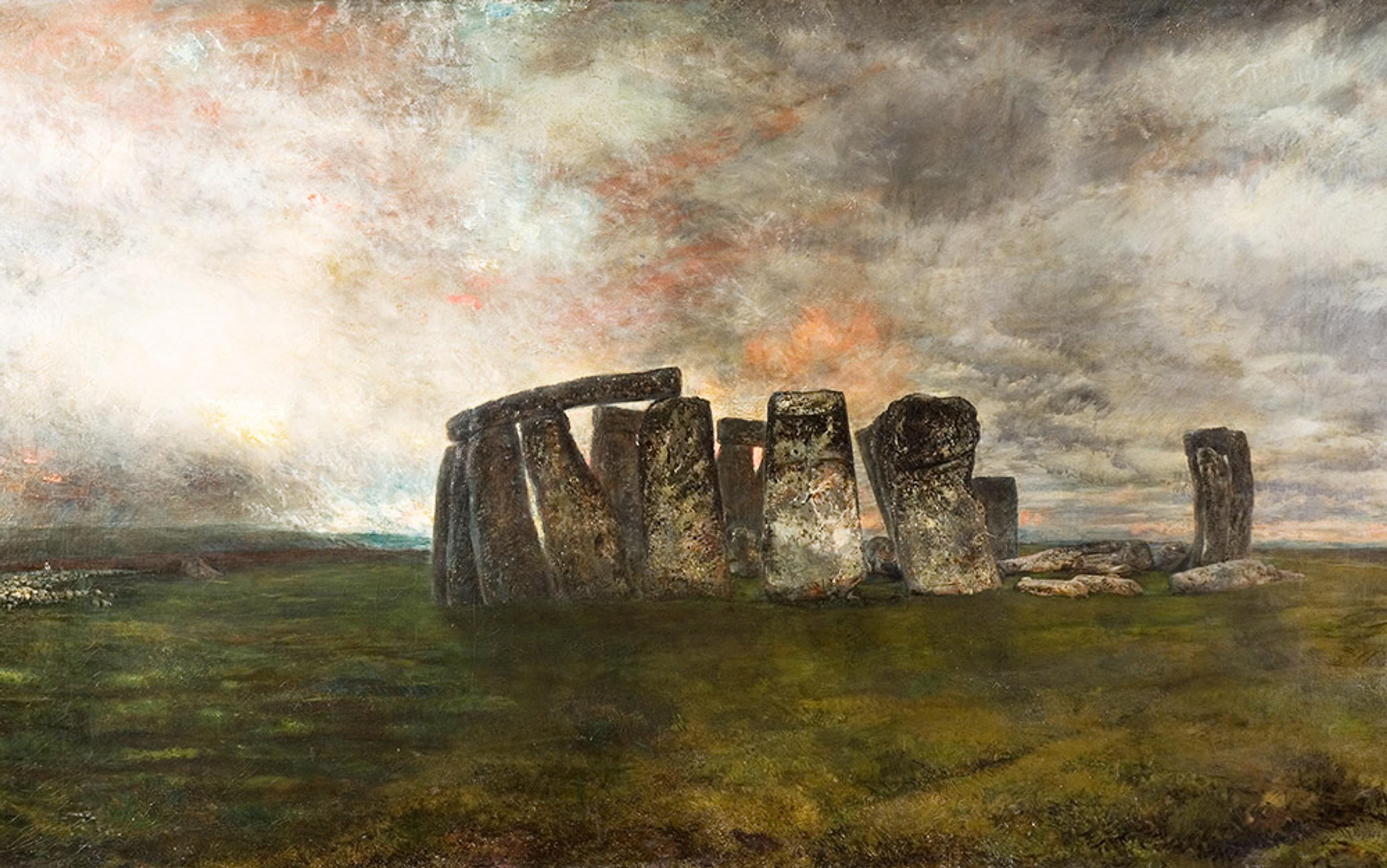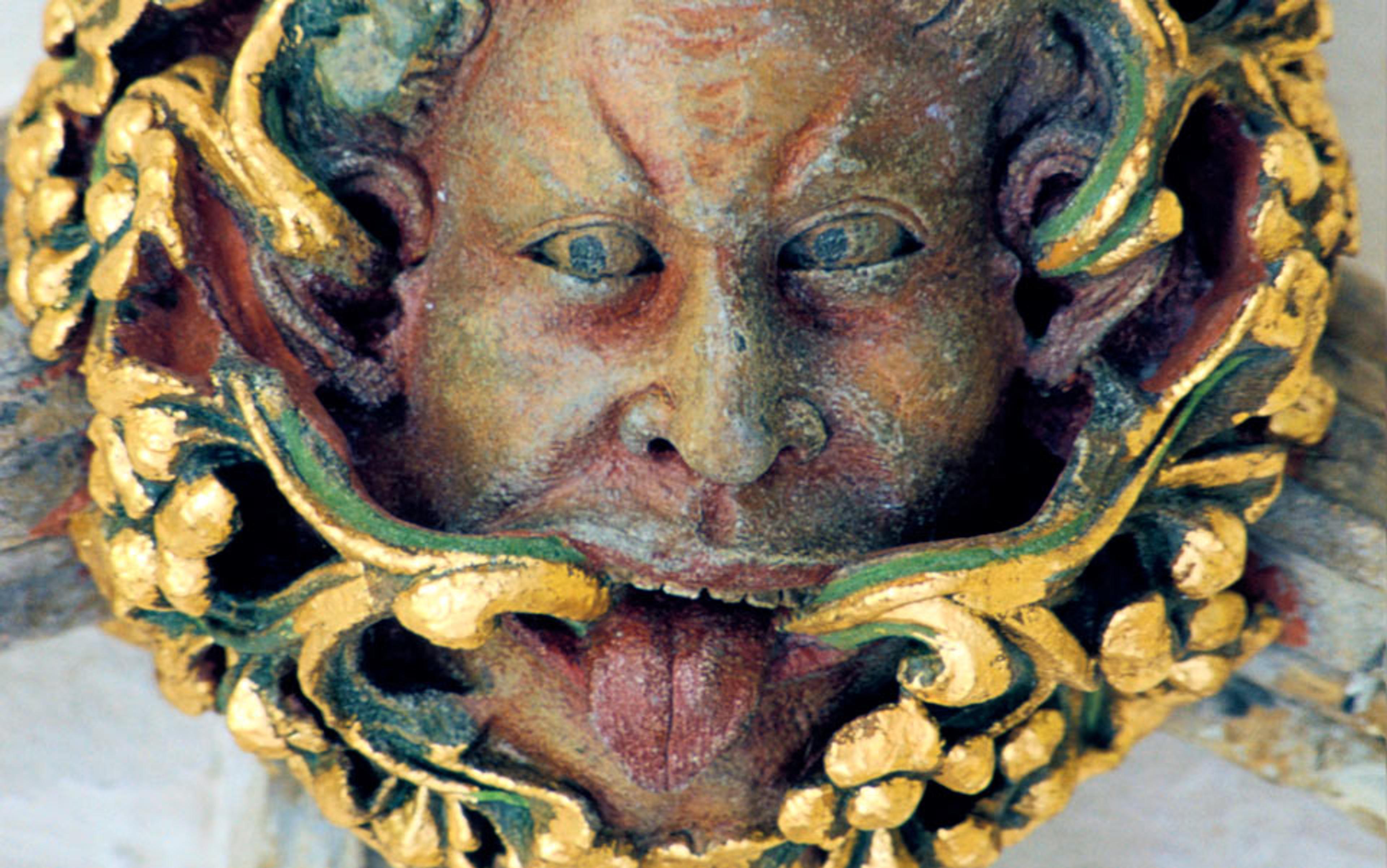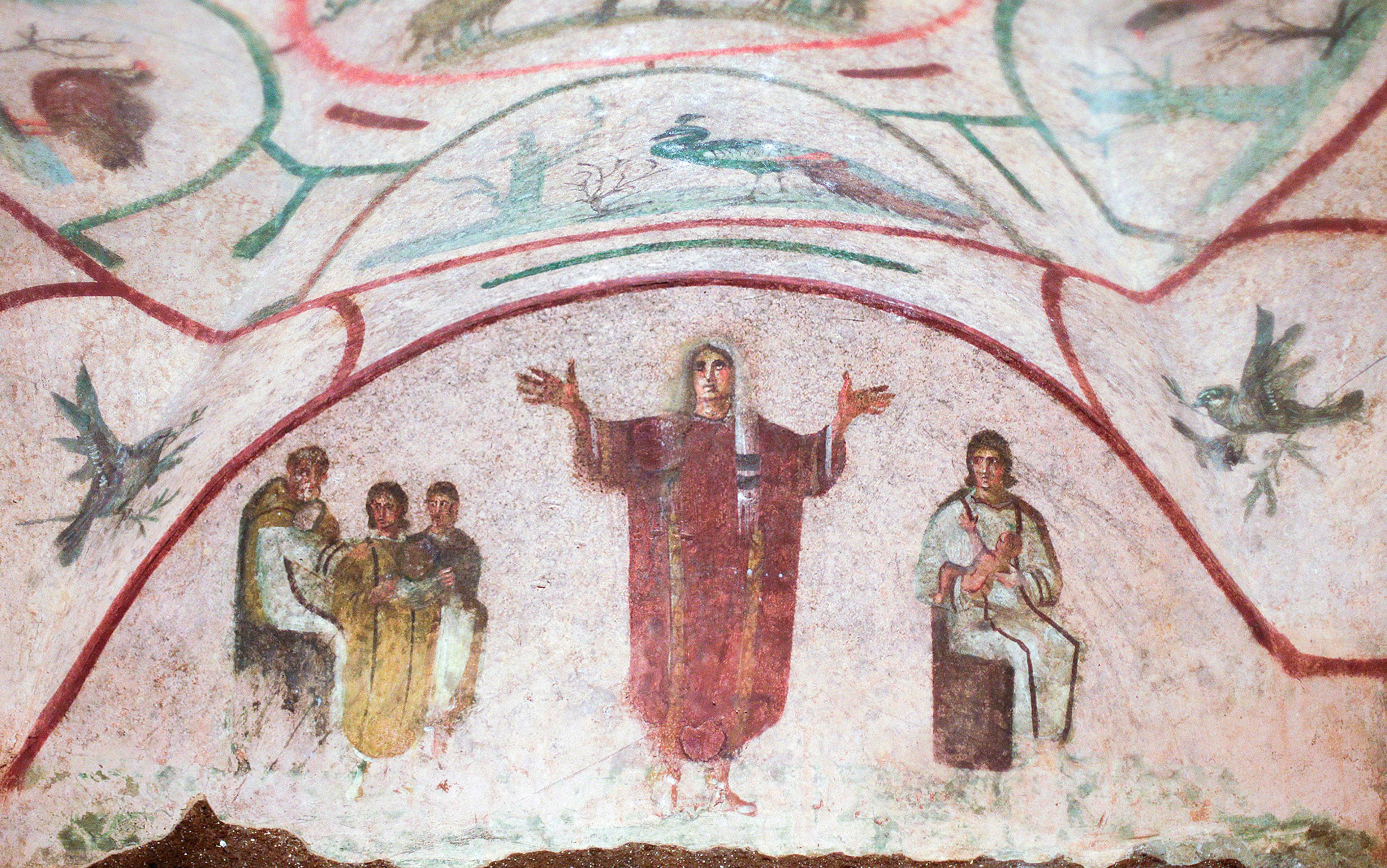On 10 February 1355, St Scholastica Day, two students at the University of Oxford got into a dispute with the landlord of the tavern at which they had been drinking. The quality of the wine, they felt, was not up to snuff. The landlord disagreed. In response, the students threw a quart pot of wine in his face and proceeded to beat him senseless. The mayor of Oxford asked the chancellor of the university to arrest the students, but 200 other ‘scholars’ turned out in their defence. Three days of rioting followed, with the townsfolk, from the mayor downwards, calling in local villagers to help defeat the students. Around 63 were killed, as were 30 locals. Many more were injured, and massive damage was done to university property. This really was town versus gown.
Oxford in the 14th century was a pretty dangerous place, even without this type of incident. A study of coroners’ rolls from the 1340s suggests a homicide rate of 120 per 100,000 of the population – compared with around 1 per 100,000 of the population today for England, Wales and Scotland, meaning you were 100 times more likely to be murdered in medieval Oxford than you are in modern Britain. And homicide in 14th-century Oxford, for both perpetrators and victims, was an overwhelmingly male affair, whereas now a third of all homicide victims are women. Some of the victims were simply unlucky: in a case of mistaken identity from 1319, Luke de Horton, probably a townsman, was cut down in the course of a student feud when he left his house to urinate in the street. More commonly, homicides arose from arguments between young adult men, whether townsfolk, students or members of Oxford’s transient population. The truism that, if you want to avoid violence, don’t go to bars where young men drink had already been established in 14th-century Oxford. But in most other respects, this medieval city presents us with a violence which was unlike, and running at a much higher level than, the current experience in Britain.
How, and why, has this historical change in violence occurred? We might turn initially to the analysis of criminal court records, which survive for England, albeit patchily, back to the 12th century. Although these records can be used to illustrate the history of a number of violent offences, it is homicide that has attracted the most attention among historians since there is a feeling (challenged by some recent work, admittedly) that homicide was more likely to be reported than other forms of violent behaviour. Thus in many instances assaults would not be reported, inhibitions about reporting sexual assault or rape would have been even stronger in the past than they are at present, while domestic violence, it is generally accepted, was massively under-reported: a wife beaten by her husband, in a period when divorce was not an option, might regard reporting him to the authorities as inherently counterproductive, and men suffering violence at the hands of their wives would risk ridicule and doubts about their masculinity were they to report it.
Moreover, assault was widely defined, in the past as now, covering everything from its victim being shaken by the lapels to experiencing severe physical injury. Further reassurance of the use of homicide statistics as indicative of levels of violence more generally is provided by the way in which, when the evidence exists, a large number of fatalities seems to have been the unexpected consequence of fights between men who meant only to damage one another. Very few killings were planned and surprisingly few seem to have occurred when other offences, notably burglary and robbery, were being committed.
What a wide range of studies reveals is that, over the long term, homicide declined steadily between the Middle Ages and the mid-20th century. Estimates of homicide rates for the Middle Ages vary. While Oxford in the 1340s appears to have been the most dangerous place in English history, battlefields excepted, the average murder rate from medieval samples across the country suggests an annual homicide rate of 20 per 100,000 of the population. By 1600, the rate, with regional variations, was probably less than half of the medieval level, maybe half that again by 1700, and down to about 2 per 100,000 by 1800. (Over these centuries, medicine did not advance enough to play the role it does today in keeping homicide levels low.) This fall in homicidal violence probably extended to other forms of violence as well. Furthermore, England’s experience seems to have been mirrored by developments in Scandinavia, what is now the Netherlands and Belgium, and northern Germany, suggesting that the decline of homicide in England was part of a northern-European phenomenon whose causes remain in large measure conjectural, but that must be related to broad cultural shifts interacting with processes of state formation.
Perhaps the most important facet of these cultural shifts was how they reflected changes in male behaviour. Outside of infanticide, female killers were rare, and were normally convicted for murdering within the family circle. Thus, causing death through violence, along with lesser forms of violence, were (as they remain) overwhelmingly male activities. Why? Some would trace this to Darwinian-based evolutionary psychology: males in all species are programmed to compete through violence, above all for reproductive rights over females, and the males who came out on top in such competitions were likely to ensure that the next generation would be strong and capable of survival. Whatever the overall applicability of this hypothesis, it remains clear that throughout most of recorded history a willingness to fight when occasion demanded it (‘stand up for yourself’ as it was expressed where I grew up) was seen as a central component of masculinity.
A key element here is the concept of male honour. From medieval knights through to 18th-century duellists to late 20th-century football hooligans, we encounter males who felt that violence was an appropriate way of dealing with perceived slights to their honour. Yet willingness to fight, not least in defence of a perception of masculine honour, has to be adjusted historically to growing cultural differentiation between different social classes. Put briefly, around 1600, men from all classes might be accused of assault or homicide at local courts, including gentry and those prosperous farmers known as yeomen. But by 1800, the men thus accused would come overwhelmingly from the lower orders, labourers or workers in the various industries that were developing at that time. Violence as a part of everyday life was by then deemed inappropriate and unnecessary among their social superiors.
The form of violence most overtly linked to notions of masculine honour was the duel. Both modern popular historians and a number of writers from around 1600 linked the duel to earlier forms of medieval single combat. In fact, the duel in the sense in which it is generally understood emerged in Italy in the late 16th century, and was inextricably linked with the honour code of the Renaissance gentleman. Between that date and the early 19th century, upper-class Englishmen fought duels, frequently involving death or maiming, on the basis of perceived insults that frequently seem massively trivial to the modern observer and which, indeed, seemed equally trivial to many contemporary observers: throughout, legal officials and members of the clergy were opposed to the practice.
The duel was publicly ridiculed: in one, the protagonists’ pistols were loaded with potato rather than bullets
But returning to the decline of violence, we find ourselves confronting the problem of why the practice of duelling in England went into terminal decline, which it did at about the middle of the 19th century (the last known duel in England was fought in 1852), whereas the practice was to continue well into the 20th century elsewhere, notably in Germany. The general background should, perhaps, be ascribed to the new ethos of modernity, capitalism and middle-class values, which was characterising English public life by that date. Connected with this was a growing sense among the public that the practice was ridiculous, not least when it involved senior politicians who, it was thought, should have been devoting their attention and energies to more serious matters (notably when the Duke of Wellington, then prime minister, engaged in a duel in 1829). Public ridicule of duelling was aided by incidents such as when the duellists’ seconds in a late-18th-century duel loaded the protagonists’ pistols with pieces of potato rather than bullets.
Unfortunately, before 1800 we have little evidence of how violence might fit into the everyday experiences of groups below the gentry. One source that does help here is The Chronicles of John Cannon. Born of farming stock in Somerset in 1684, Cannon was an autodidact and bibliophile, a man of wide reading and deep Christian faith. He worked as a farm servant, as an excise officer, and later in life as a schoolteacher and as parish clerk to both of Glastonbury’s churches, also earning money through being a scrivener and helping cast accounts. Like most people, Cannon took a keen interest in law and order in his area, particularly murders, as well as crimes from further afield, news of which came to him via newspapers and similar publications. What is perhaps surprising, given his educational and social status, was that Cannon, although not a violent man, was perfectly capable of dishing it out when trouble came his way. Thus in 1737 we find him augmenting his income by selling ale in his house and, when one of his customers insulted Cannon’s daughter, Cannon gave him ‘a smart blow on the face with my fist which fetched his blood away and he bled like a pig’. When the man’s brother intervened, Cannon flattened him too, noting subsequently that ‘my other guests commended me in this act’. Sad to relate, Cannon also noted two occasions when he struck his wife, claiming extreme provocation on each occasion yet obviously experiencing shame for his actions.
Cannon striking his wife introduces another important difference between our past and our current understanding of violence: there used to exist large areas of what might be described as ‘licensed violence’. Many of these were based around the family and the household. Up to the 19th century, many households, and not just those of the rich, would include live-in servants, most of whom would be young, and apprentices. Their masters and mistresses would have what was known to legal writers as ‘moderate correction’ over them: the right to physically chastise. Likewise, parents had rights of ‘moderate correction’ over their children, schoolmasters over their pupils, and, perhaps less certainly, husbands over their wives. None of this would, of course, be acceptable under present circumstances. But there is occasional evidence that these practices were not always acceptable in the past either. Individuals and communities, although often reluctant to intervene in other people’s household affairs, manifested their concerns that the physical chastisement being handed out on some occasions went far beyond ‘moderate correction’.
Attitudes to wife-beating illustrate this point. There was a widespread feeling that men should ‘control’ their wives, and that using violence was a legitimate way of doing so: even the bon bourgeois and archetypical civil servant Samuel Pepys blackened his wife’s eye on one occasion, although he was clearly ashamed of the act and worried about the impact his wife’s appearance would have at a forthcoming social event. Yet explicit disapproval of wife-beating can be traced back to at least the early 17th century, when Puritan writers deplored the practice, and it was clearly attracting considerable adverse comment at the turn of the 18th century. On 2 February 1799, the Newcastle Courant, an important regional newspaper, recounted the probably apocryphal story of a wife tying up a habitually abusive husband in the bedclothes and beating him until he promised better behaviour towards her, opining that ‘when a fellow’s heart is so dead to sensibility as to warrant him striking a woman, it is to his own shoulders that the remedy should be applied’.
At about the same time there is evidence of increasing neighbourhood sensitivity to wife-beating. In an incident in Surrey in the 1840s, villagers assembled to subject a wife-beater to community shaming through ‘rough music’, a cacophony of whistles, horns, cowbells, rattles and beaten pans, which was halted to give a spokesman opportunity to declare that it was ‘a great shame and disgrace’ for such a man to live among them. Violence against wives is, alas, still with us, but it was clearly becoming unacceptable in official circles and among at least some sections of the general public as the 19th century progressed.
Although it is not always possible to delineate statistical changes in levels of violence, it is, as changing reactions to wife-beating suggest, possible to trace shifting attitudes. Indeed, the development of deeper sensibilities about violence can lead to increases in quantitative evidence of violence – modern statistics on domestic violence, and the long-term rise of prosecutions for sexual assault over the 20th century are probably evidence of this. Nevertheless, many forms of violence that were commonplace in the past are no longer tolerated.
Corporal punishment in state schools in the United Kingdom was abolished in 1986, and in private schools in England and Wales in 1998. Bullying, once regarded as a normal hazard of growing up, or even as a character-forming experience, is now widely condemned, both in school and at the workplace. And although the precise relationship remains elusive, the decline in interpersonal violence between the mid-18th and mid-19th centuries coincided with the retreat from inflicting public executions, public whippings and public shaming punishments on convicted criminals. Changes in official attitudes are further demonstrated by how the police and the law courts, albeit imperfectly in some instances, are now much more alert to the reality of domestic violence and to the need for the sympathetic and sensitive treatment of rape victims. The everyday recourse to violence that was apparently so widespread even two centuries ago is now seen, rightly or wrongly, as the prerogative of discrete, and normally lower-class, groups: boys in disadvantaged council estates, teenage gangs, football hooligans, professional criminals, working-class ‘hard men’.
This should not give us cause for complacency: as events in Germany in the 1930s, parts of Africa and the Middle East more recently, and the plots of countless post-apocalypse movies remind us, the essentially secure and violence-free civil society that most of us in the West take for granted is more fragile and vulnerable than we generally assume. And as statistics on domestic violence demonstrate, we still have a way to go. But an awareness of the ‘violence we have lost’ is an important element in that process, central to the general public’s view of history, of ‘understanding ourselves in time’. So many of the issues that we confront when considering violence in modern society – media distortion and amplification, problems of definition, problems of the cultural acceptance of violence, the connection between violence and masculinity – have a historical dimension, and getting to grips with that dimension helps to deepen our understanding of our current situation. Even terrorism, so often identified as a new problem, has been with us in something like its modern form since the Fenian bombings of the early 1880s.
So how did the St Scholastica Day riot of 1355 end? It provides us with a note of optimism. The reigning monarch, Edward III, settled the dispute in favour of the university, which was, after all, the major source of staff for the royal administration. Henceforth, on 10 February each year, the anniversary of the commencement of the rioting, the mayor of Oxford and a number of other leading citizens, equal in number to the students killed in 1355, had to attend mass at the university church, St Mary’s, and to perform penance for what the townsfolk had done that year. This practice survived the Reformation, and came to an end in 1825 when the mayor of Oxford simply refused to co-operate. But formal reconciliation between town and gown, by any standards long overdue, had to wait until the 600th anniversary of the affair in 1955, when the University of Oxford granted the city’s mayor an honorary degree, and Oxford made the vice chancellor of the university an honorary freeman of the city. It was perhaps fitting that this act of closure for an episode of medieval mayhem came in the 1950s, now widely regarded as the most stable and non-violent decade in recent British history.
